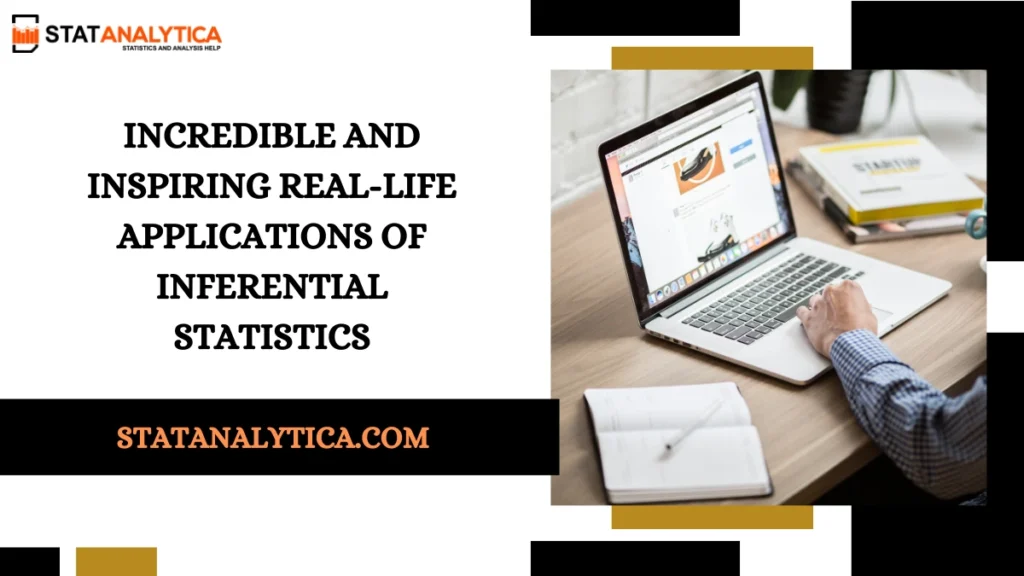Have you ever wondered how a small survey of a few hundred people can accurately predict the outcome of a nationwide election? Or how a pharmaceutical company can confidently declare a new drug safe and effective for millions of patients after testing it on just a few thousand? The answer lies in the incredible power of inferential statistics! This is the magical tool that allows us to draw powerful conclusions about a large group (a population) based on the data we collect from a smaller, representative subset of that group (a sample).
In a world overflowing with data, the ability to make informed decisions and predictions is more valuable than ever. Inferential statistics isn’t just a dry, academic subject; it’s a dynamic and essential part of our daily lives, influencing everything from the products we buy to the policies that govern our societies.
Real-Life Applications of Inferential Statistics
Table of Contents
This blog post will take you on an inspiring journey through the fascinating world of inferential statistics. We’ll explore its core concepts, reveal its amazing Real-Life Applications of Inferential Statistics, and show you how this powerful discipline is truly a key to unlocking a world of wisdom and better decision-making.
What is Inferential Statistics?
Before we dive into the applications, let’s quickly demystify what inferential statistics is all about. At its heart, it’s a branch of statistics that uses data from a sample to make generalizations or inferences about a larger population. This contrasts with descriptive statistics, which simply summarize and describe the features of the data you have.
Think of it like this: if you wanted to know the average height of all adults in your country (the population), it would be impossible to measure every single person. Instead, you could take a random sample of a few thousand people, measure their heights, and use inferential statistics to estimate the average height of the entire population with a certain degree of confidence.
The two main pillars of inferential statistics are:
- Hypothesis Testing: This is a formal procedure for investigating our ideas about the world. For example, testing if a new marketing campaign is more effective than the old one. We set up a null hypothesis (e.g., there’s no difference) and an alternative hypothesis (e.g., the new campaign is better) and use our sample data to determine if there’s enough evidence to reject the null hypothesis.
- Estimation: This involves using a sample to estimate a population parameter (like the mean or proportion). We often provide a point estimate (a single value) and a confidence interval (a range of values) to show how confident we are that the true population parameter falls within that range. For instance, a poll might state that a candidate has 52% support with a margin of error of +/- 3%, which gives a confidence interval of 49% to 55%.
The Inspiring Applications: Where Inferential Statistics Shines Brightly
The beauty of inferential statistics lies in its versatility. It’s a universal language for data-driven discovery, and its applications are found in virtually every field imaginable. Let’s explore some of the most impactful and amazing examples.
1. Making a Difference in Healthcare and Medicine
Inferential statistics is the bedrock of modern medicine. It’s used in clinical trials to determine the effectiveness and safety of new drugs, medical devices, and treatments.
- Clinical Trials: Researchers test a new drug on a sample of patients and use inferential statistics to determine if the drug’s effect is statistically significant compared to a placebo. They can then infer that the drug will have a similar effect on the larger population of people with that condition. This process is crucial for regulatory approval and ensuring patient safety.
- Public Health: By surveying a sample of the population, epidemiologists can estimate the prevalence of a disease, identify risk factors, and evaluate the effectiveness of public health interventions like vaccination campaigns. This data helps health organizations allocate resources and make informed policy decisions.
2. Shaping the World of Business and Marketing
In the competitive world of business, data is king. Inferential statistics provides the insights needed to make strategic decisions, optimize marketing efforts, and understand consumer behavior.
- Market Research: Before launching a new product, companies conduct surveys and focus groups with a sample of potential customers. Using statistical inference, they can estimate the demand for the product, identify target demographics, and predict its potential success in the broader market.
- A/B Testing: This is a powerful tool used by websites and apps to test two different versions of a webpage, ad, or feature. By showing each version to a random sample of users and analyzing the results with hypothesis testing, companies can determine which version is more effective at achieving a specific goal, like a higher click-through rate or more sales.
- Quality Control: Manufacturers use statistical process control charts to monitor the quality of their products. By randomly sampling items from a production line, they can infer whether the entire production process is operating within acceptable limits and identify problems before they lead to widespread defects.
3. Predicting the Future in Political Science and Social Research
Political polls and social surveys are some of the most visible applications of inferential statistics. They provide a snapshot of public opinion and allow us to make predictions about future events.
- Election Polling: Pollsters contact a carefully selected sample of voters and use statistical inference to predict the outcome of an election. The “margin of error” you often hear about is a direct result of this process, providing a confidence interval for the estimated results.
- Social Surveys: Organizations like the Pew Research Center conduct large-scale surveys on topics ranging from social media use to religious beliefs. They use inferential statistics to make generalizations about the entire population, giving us valuable insights into societal trends and attitudes.
4. Advancing Science and Environmental Studies
From understanding the universe to protecting our planet, inferential statistics is a critical tool for scientific discovery.
- Astronomy: Astronomers use data from a small sample of galaxies to make inferences about the distribution of dark matter in the entire universe.
- Ecology: Ecologists use statistical methods to estimate the population size of an endangered species based on a sample of sightings or track-and-trace data. They can also use it to analyze the impact of environmental changes on ecosystems.
5. Revolutionizing Finance and Economics
In the world of finance, risk management and forecasting are paramount. Inferential statistics provides the tools needed to analyze markets and make sound financial decisions.
- Stock Market Analysis: Financial analysts use statistical models to analyze historical stock performance data from a sample of companies and make predictions about future market trends. They also use it to assess risk and build diversified portfolios.
- Economic Forecasting: Economists use complex statistical models to predict key economic indicators like GDP growth, inflation rates, and unemployment. These forecasts help governments and businesses plan for the future.
The Power of the Right Tools: Key Statistical Methods
To make these powerful inferences, statisticians use a variety of tools and techniques. Some of the most common include:
- t-Tests: Used to compare the means of two groups (e.g., is there a significant difference in test scores between students who received a new tutoring program and those who didn’t?).
- ANOVA (Analysis of Variance): An extension of the t-test, used to compare the means of three or more groups.
- Chi-Square Tests: Used to determine if there’s a relationship between two categorical variables (e.g., is there a relationship between gender and political affiliation?).
- Linear Regression: A powerful tool for modeling the relationship between a dependent variable and one or more independent variables. It’s used to make predictions (e.g., predicting house prices based on size, location, and number of bedrooms).
- Confidence Intervals: As mentioned earlier, this provides a range of values that is likely to contain the true population parameter.
Why These Skills are So Valuable: Embracing a Data-Driven Mindset
As you can see, the real-life applications of inferential statistics are vast and truly transformative. From developing life-saving medicines to optimizing marketing campaigns and forecasting economic trends, this field is at the core of data-driven decision-making.
Learning about inferential statistics isn’t just about crunching numbers; it’s about developing a critical and analytical mindset. It teaches us to question assumptions, understand the limits of our knowledge, and make smarter, more informed choices based on evidence.
In today’s data-rich world, embracing the principles of inferential statistics gives you a powerful advantage, whether you’re a student, a professional, or simply a curious individual trying to make sense of the world around you.
So the next time you see a news report about a poll or a study, remember the incredible power of inferential statistics working behind the scenes, turning a small sample into a massive and inspiring story of discovery. It’s a truly amazing and positive force for good in our world!
Also Read: Let’s Navigate Statistics Career Options After Graduation
Why can’t we just study the whole population instead of a sample?
Studying an entire population is often impossible, too expensive, or too time-consuming. Inferential statistics provides a cost-effective and efficient way to get a highly accurate estimate about the whole group by carefully studying just a small, representative part of it.
How do we know if our sample is a good representation of the population?
This is where sampling methods come in! Statisticians use techniques like random sampling to ensure that every member of the population has an equal chance of being selected. This helps minimize bias and makes the sample data a reliable basis for making inferences.
What is a “margin of error” and how does it relate to inferential statistics?
The margin of error is a crucial component of inferential statistics, especially in polls and surveys. It provides a range of values above and below the point estimate (e.g., 52% support) that likely contains the true population value. A smaller margin of error indicates a more precise estimate.


